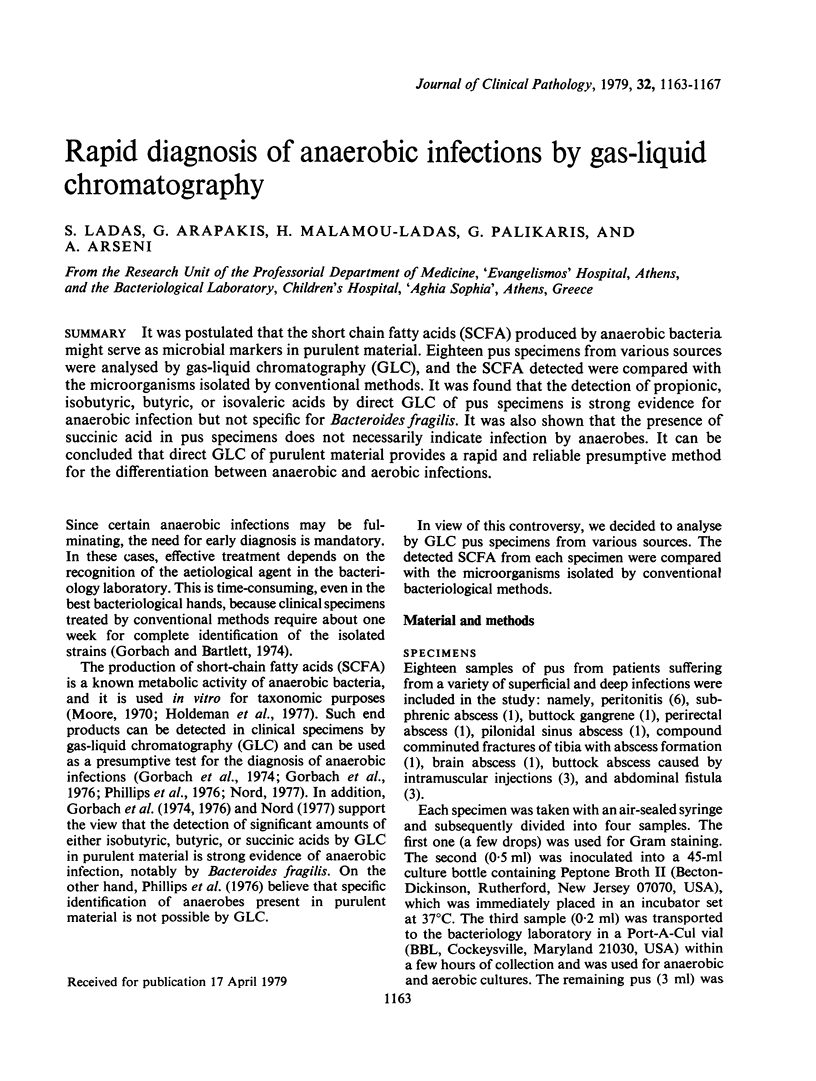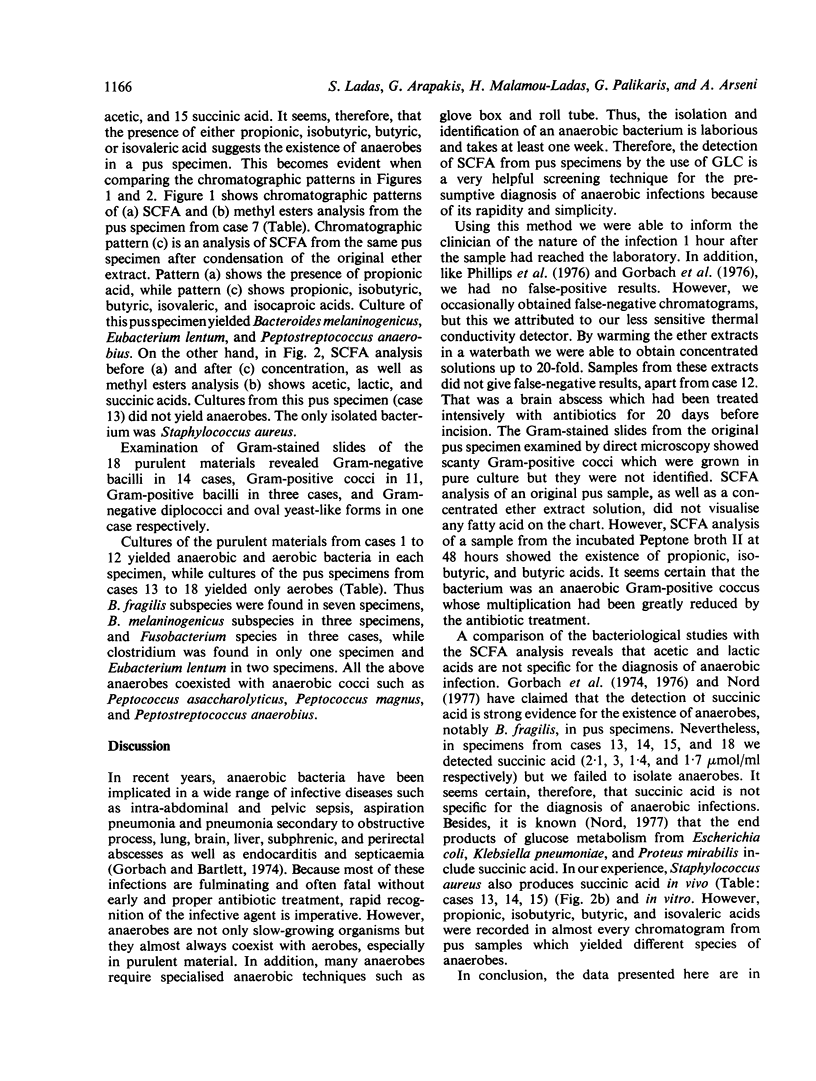Abstract
It was postulated that the short chain fatty acids (SCFA) produced by anaerobic bacteria might serve as microbial markers in purulent material. Eighteen pus specimens from various sources were analysed by gas-liquid chromatography (GLC), and the SCFA detected were compared with the microorganisms isolated by conventional methods. It was found that the detection of propionic, isobutyric, butyric, or isovaleric acids by direct GLC of pus specimens is strong evidence for anaerobic infection but not specific for Bacteroides fragilis. It was also shown that the presence of succinic acid in pus specimens does not necessarily indicate infection by anaerobes. It can be concluded that direct GLC of purulent material provides a rapid and reliable presumptive method for the differentiation between anaerobic and aerobic infections.
Full text
PDF




Selected References
These references are in PubMed. This may not be the complete list of references from this article.
- Gorbach S. L., Bartlett J. G. Anaerobic infections. 1. N Engl J Med. 1974 May 23;290(21):1177–1184. doi: 10.1056/NEJM197405232902106. [DOI] [PubMed] [Google Scholar]
- Gorbach S. L., Mayhew J. W., Bartlett J. G., Thadepalli H., Onderdonk A. B. Rapid diagnosis of anaerobic infections by direct gas-liquid chromatography of clinical speciments. J Clin Invest. 1976 Feb;57(2):478–484. doi: 10.1172/JCI108300. [DOI] [PMC free article] [PubMed] [Google Scholar]
- Nord C. E. Diagnosis of anaerobic infections by gas-liquid chromatography. Acta Pathol Microbiol Scand Suppl. 1977;(259):55–59. [PubMed] [Google Scholar]
- Phillips K. D., Tearle P. V., Willis A. T. Rapid diagnosis of anaerobic infections by gas-liquid chromatography of clinical material. J Clin Pathol. 1976 May;29(5):428–432. doi: 10.1136/jcp.29.5.428. [DOI] [PMC free article] [PubMed] [Google Scholar]


